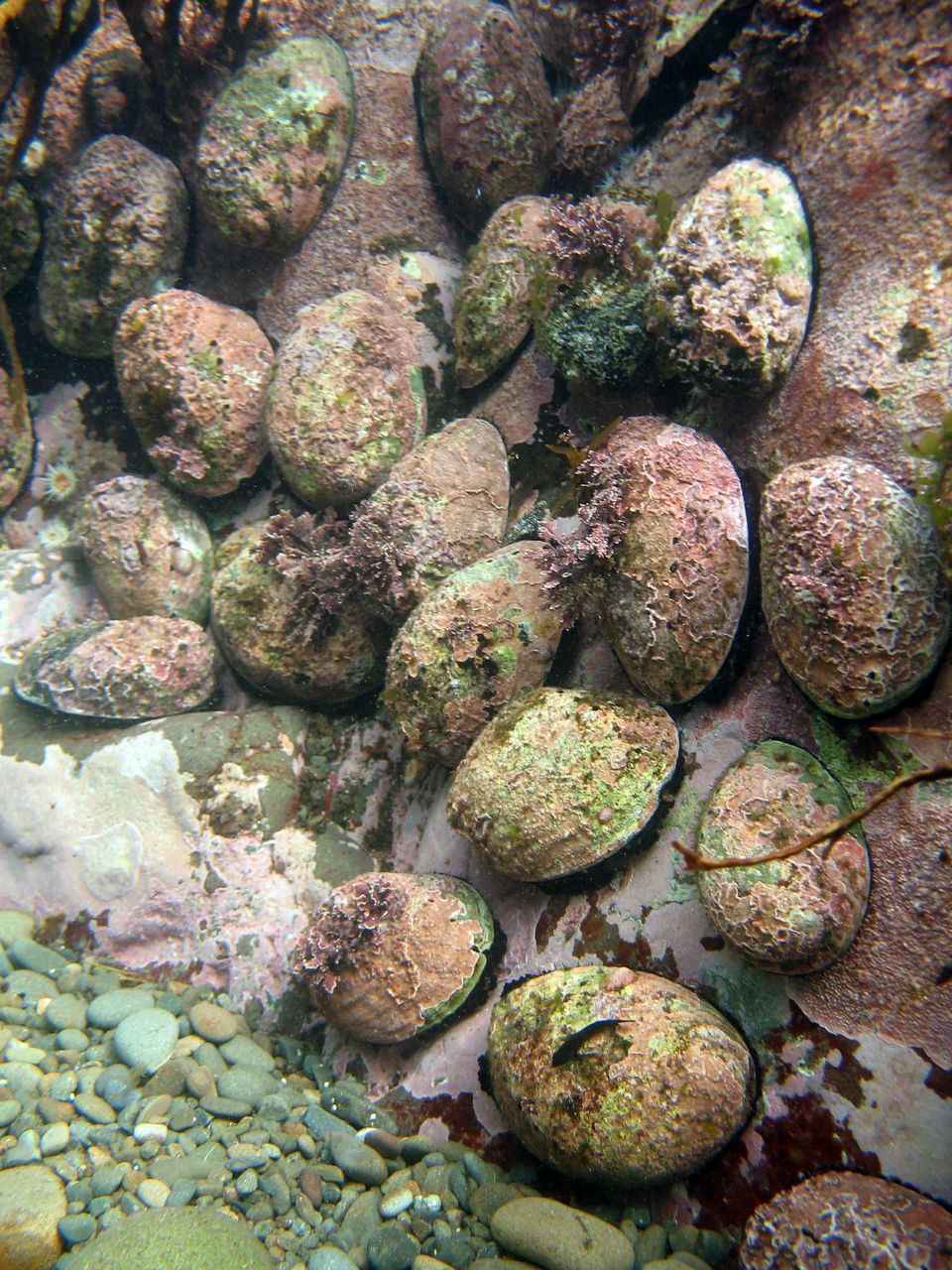The Māori are the indigenous people of Aotearoa, the land of the long white cloud, also known as New Zealand. The Māori also are the owners of Aotearoa Fisheries Ltd., one of the country’s largest seafood companies and a major supplier of pāua, or abalone.
 That makes Aotearoa Fisheries an excellent candidate for a new approach to fisheries management that holds promise for sustaining the harvest from healthier fisheries, boosting income for local communities and protecting both land and marine ecosystems for future generations.
That makes Aotearoa Fisheries an excellent candidate for a new approach to fisheries management that holds promise for sustaining the harvest from healthier fisheries, boosting income for local communities and protecting both land and marine ecosystems for future generations.
The key is the valuation of “ecosystem services.” By counting, aggregating and ultimately “selling” benefits such as cleaner air, fresher water, vibrant biodiversity and community health, ecosystem approaches can attract investments into those value-creating activities.
Tend to the farm, not just the animalsTony Craig,Terra Moana Ltd.
Such conservation financing deals are becoming more common on land, with billions of dollars of investment in wetland restoration, habitat protection for endangered species, and forest preservation for carbon storage. The developing carbon markets demonstrate an awareness of the interconnectivity and regenerative abilities of natural systems.
The oceans’ fluid and borderless nature makes the valuation and financing of marine ecosystem services even more complex. Aotearoa Fisheries’ emerging ecosystem approach to wild caught abalone is one of the first corporate ecosystem service reviews in the global industry for commercial seafood. This approach is being taken up to enable harvest from healthier fisheries, higher incomes and to protect the environment and marine ecosystems for both future catches and future generations.
“Tend to the farm, not just the animals,” is the way Tony Craig, my partner at the consultancy Terra Moana Ltd., sums up the approach.
Natural Capital
Aotearoa Fisheries is operated on behalf of the Maori people of New Zealand, all of whom are shareholders and whose equity is valued at more than NZD$400 million (US$301.6). The company holds about 50 percent of all of the quota in New Zealand’s fisheries.
New Zealand has had a quota management system for fisheries for many years that represents a valiant effort to manage fish stocks sustainably. Such rights-based management, a cornerstone of good fisheries management, can be strengthened by complementary ecosystem-based management approaches.
But Aotearoa’s long-term challenges went beyond simply managing the actual harvest. Climate change and erosion from land-based agriculture threatened the marine ecosystems in which abalone had thrived for centuries, threatening the pāua business. More acidic water has been experimentally shown to affect shell formation; the full effects of climate change are still unknown. More immediately visible is the sediment from land that has smothered kelp and reduced the habitat and food for abalone. Tackling those challenges required an ecosystem approach.
Valuing ecosystem services for fisheries is different than capturing the conservation benefits of natural resources on land. Fishing is the last wild-harvest frontier. Here fishermen, retailers and consumers alike seemingly expect nature to provide in abundance, un-touched by our abuse from pollution, marine debris and habitat destruction.
The economics of wild fisheries and the marine realm are different from land. In fluid aquatic ecosystems there are no fences and that makes management by way of property rights tricky, although not impossible.
Structuring deals with strong ecosystem based management is also tricky. We can restructure fisheries to enable more economical efficiencies and incentivize fishermen themselves to take on the costs, yet this is rarely smooth sailing.
The NGO world has been effective at setting up improvement processes, persuading those along the seafood supply chain to contribute, one way or another, and enlisting a larger community of new philanthropists and investors.
Aotearoa Fisheries is well positioned to capitalize on the ecosystem approach, through lower operating costs and improved yields and local livelihoods. The company is developing an action plan that includes branding possibilities for wild, premium New Zealand pāua, with a compelling provenance story. The company is also scoping an ecological restoration project for the Marlborough Sounds, one of the prime abalone harvesting areas impacted by sedimentation.
Aotearoa Fisheries’ work to understand what a sustainable pãua fishery might look like was presented at the Seafood Summit in February 2015 and including a case study. Aotearoa Fisheries is continuing to work with the New Zealand Sustainable Business Council to deepen its research.
The ecosystem service review explored how Aotearoa Fisheries might build structures – financial or otherwise – to support those ecosystem services and reduce any impacts. Other questions were raised as well: Does it necessarily follow that such ecosystem-based management costs more, as is so often feared by fishermen and managers? Could shifts in management, valuation and measurement possibly generate management efficiencies? Could that enable money to flow where it’s needed to restore sustainable oceans and shore up seafood business supply?
Who pays?
The answers to those questions will be valuable far beyond New Zealand. Ecosystem approaches are presently bespoke, sometimes inefficient, and often un-replicable arrangements. Ocean ecosystem services investments have been simply too complicated in terms of how investment occurs, how deals are done (or not being done rapidly enough), what the return on investment is, who the other investors and partners are, and who pays how much.
An ecosystems approach is the next step in the surprisingly successful effort to clean up our act in the production of seafood. In the last twenty years, since the infamous collapse of the Grand Banks cod fishery in 1992, the Marine and Aquaculture Stewardship Councils have gone mainstream and an increasing amount of seafood products are certified to meet their high standards.
Working with environmental NGOs, the industry has developed tools and techniques that enable fisheries to: reduce their incidental capture of species such as turtles, sharks, seabirds and dolphins, protect critical habitat, reduce waste, water and energy costs, improve fisheries more broadly and, over time earn such certification recognition.
Many major retailers around the world, like Safeway and Whole Foods in the USA or Marks and Spencer in the UK, also have sustainable sourcing commitments and preferentially purchase better seafood products that meet their lists of increasingly stringent criteria, for example now expanding to include human rights.
Adoption of an ecosystem approach, with a suite of tools and management practices can move the needle for the sustainable seafood sector and all the stakeholders in healthy oceans. Accounting for the the stocks and flows, goods and services from nature that contribute to human well-being enables the generation of goods and services and stewardship of natural capital.
Ecosystem service approaches on land have revealed opportunities for shifting mindsets and better management; perhaps a modified approach should be applied to seafood? The fish in the sea and trees in the forest are the food and paper we derive from well-functioning ecosystems. Tend to the farm, not just the animals.
Transparency and Accountability
The new ecosystem services tools include: the systematic assessment, measurement, valuation and accounting by a business or industry of their impacts and dependencies on the natural world, as well as policies, management and tools that also collaboratively build transparent systems that work for financing.
Such reporting and analysis of production systems is a corporate responsibility “best practice” for forward thinking companies. Agriculture and water-based businesses, such as food giant Danone, are putting numbers to their ecosystem risks and impacts. Among major international seafood companies, a dozen early-adopters are starting to report such metrics, albeit inconsistently.
After nearly twenty years of testing fisheries management and improvement approaches, we know a lot about what works. The next step is learning how to smoothly and accountably pay for it. Deploying best practices and ensuring they’re used in fishery after fishery and country by country costs money. Who pays for such improvement is the most pressing issue for the sustainable seafood movement. Getting money flowing smoothly to projects that work is essential to shifting the system towards sustainability.
Through the work with Aotearoa Fisheries, considerable progress has been made in designing ownership and management systems. We invite leaders in ecosystem-based management should come forward to share their learnings and lessons, especially workable structures to pay for improvement.
In western societies, where many have lost a deeper connection with nature, we take the ocean’s ability to supply seafood for granted. Basing livelihoods on this fallacy is risky business. A more indigenous approach could help set an example of fisheries management based on deep sustainability ethics. Measuring and valuing such ecosystem services may help us wade out of murky waters.
DISCLOSURE
The author is a partner in the consultancy Terra Moana Ltd., which conducted the Aotearoa Fisheries ecosystem service review. Interested parties can make inquiries at katherine (at) terramoana.co.nz.











